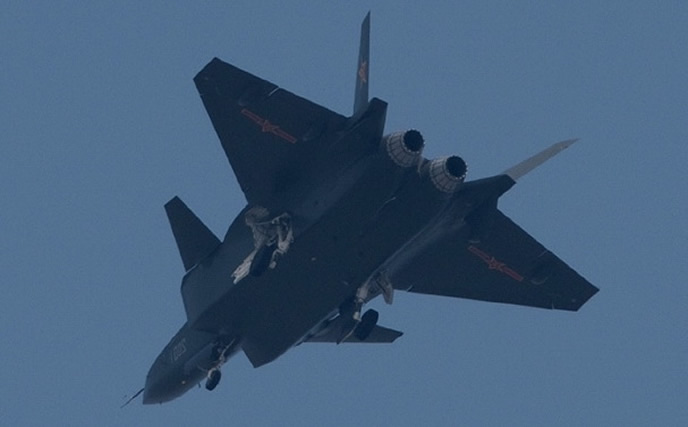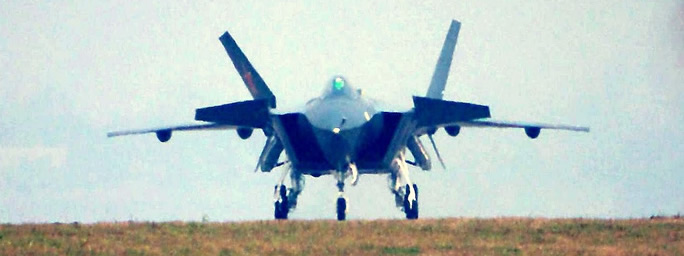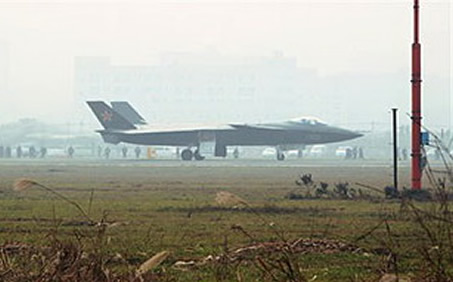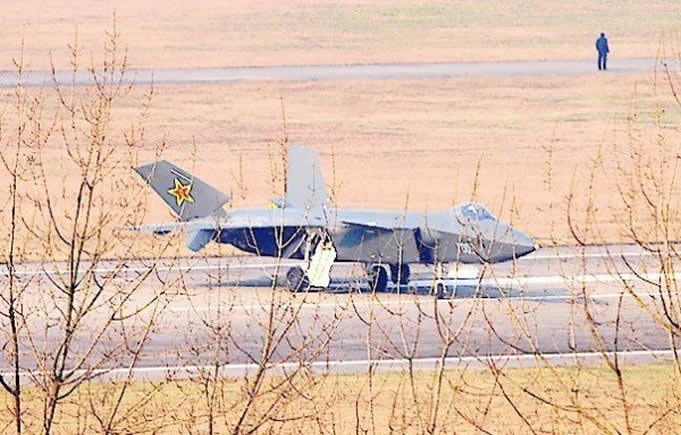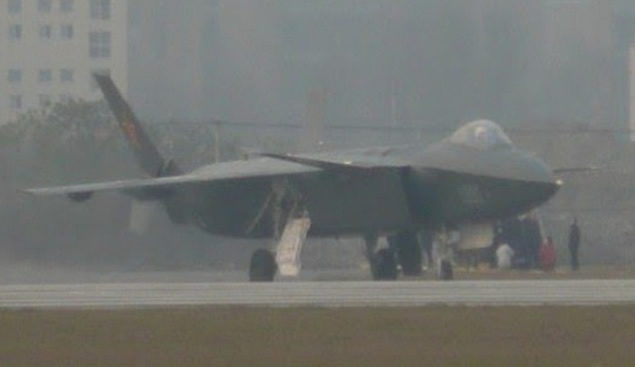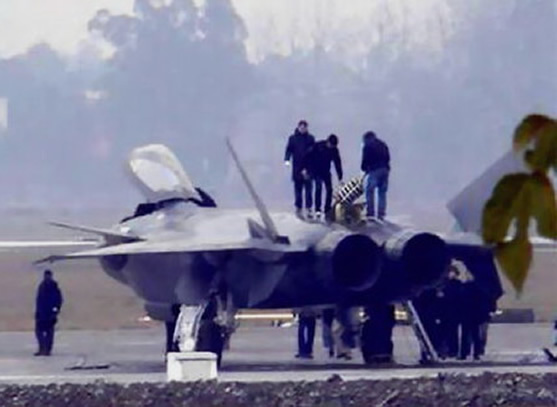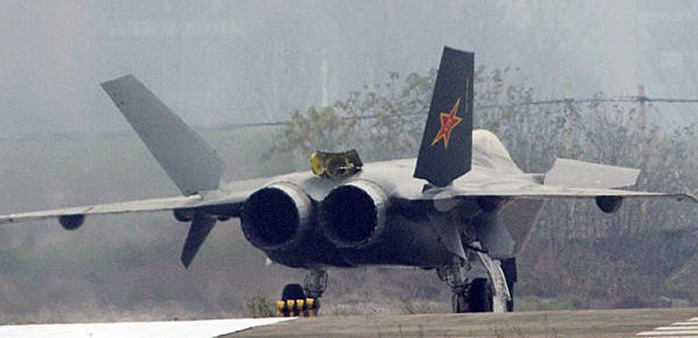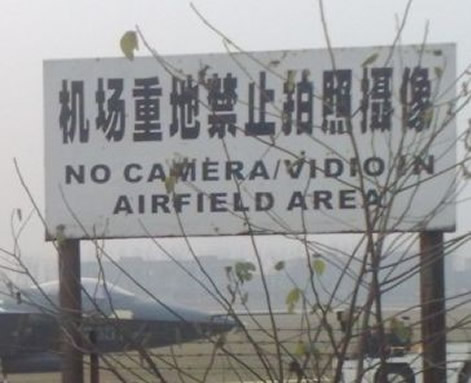
 THE BELOW LINKS CONTAIN DETAILED AIRLINE, MILITARY JETS, TEST AIRCRAFT, AIRPLANE FACT SHEETS AND AEROSPACE INFORMATION THE BELOW LINKS CONTAIN AVIATION, MILITARY, AIRCRAFT VIDEOS, PICTURES, FACTS, INFORMATION, AUDIO, HISTORY, MOVIES AND PHOTOS 
THE BELOW LINKS CONTAIN FLIGHT TRACKING, AIRPORT INFO, AVIATION PIONEERS, USAF REFERENCES, NTSB FACTS AND AVIATION WEATHER |
THE CHINESE CHENGDU J-20 TWIN ENGINE STEALTH JET
CHINAS NEW STEALTH FIGHTER JET AIRCRAFT
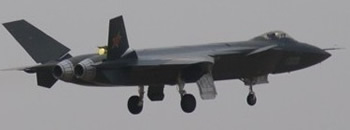 |
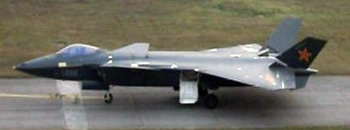 |
The Chengdu Chinese Stealth Fighter Jet J-20 PrototypeThe Chinese Stealth Fighter J-20 "Annihilator Twenty" is a fifth generation, twin engine stealth fighter aircraft built by Chengdu Aircraft Group for the Chinese PLA Air Force. In late 2010, the J-20 underwent high speed taxiing tests. The J-20 made its first flight on 11 January 2011. The Deputy Commander of the People's Liberation Army Air Force said that he expected the J-20 to be operational in 2017–2019.
The J-20 was one of the Chinese stealth fighter programs under the codename J-XX that was launched in the late 90s.
China probably declined to participate in development and production of new fifth generation fighter with Russia given the belief that Russia stood to gain more from Chinese participation. Chinese leaders have stated that their design was superior to the Russian PAK FA.
Balkan officials of the military told AP (Associated Press) that China and Russia adopted some stealth technology from a Lockheed F-117 Nighthawk, which was shot down by the Serbian military in 1999 during the Kosovo war that the Americans could not find and destroy. If Chinese experts used the F-117 stealth coatings, the result would be decades behind current American state-of-the-art technology. Chinese test pilot Xu Yongling said that the J-20 was a masterpiece of chinese innovation, he also said the F-117 technology was already outdated even at the time it was shot down, and could not be applied to a next-generation stealth jet.
Russian military commentator Ilya Kramnik conjectures that China is still 10 to 15 years behind the United States and Russia in fighter technology and may not be able to manufacture all the advanced composite materials, avionics and sensor packages needed for such aircraft, and could instead turn to foreign suppliers. However, he speculates that China may be able to produce the J-20 at a cost 50% to 80% lower than US and Russian fifth-generation jet fighters, and that potential customers may include Pakistan, the Middle East, Latin America, Southeast Asia and the richest countries in Africa. Some speculate that China will have problems meeting its production requirements, as it has with several other jet fighter projects in production. The question was raised of whether the aircraft is a prototype, like the Sukhoi T-50, or a technology demonstrator similar to the Lockheed YF-22.
Despite a current arms embargo, China may use ongoing economic problems to pressure the European Union into selling advanced military technologies, such as those needed to complete the J-20. The J-20 is a single-seat, twin-engine aircraft which appears to be somewhat larger and heavier than the comparable Sukhoi T-50 and Lockheed Martin F-22 Raptor. It is estimated that it is approximately 75 feet (23 m) in length, has a wingspan of 45 feet (14 m) or more, and is expected to have a takeoff weight of 75,000 to 80,000 pounds (34,000 to 36,000 kg) with internal stores only. The prototype could be powered by twin 32,000 pounds (15,000 kg) thrust Saturn 117S engines provided by Russia. Chinese sources have claimed that production aircraft will be powered by two 13,200 kilograms (29,000 lb)/WS-10 class high thrust turbofan engines fitted with Thrust Vector Controlled nozzles, both made in China. Pentagon spokesman Col. David Lapan has said that one of the signs of problems in the development is that China is still seeking engines from Russia for the aircraft.
The J-20 may have lower supercruise speed (yet greater range) and less agility than a Lockheed Martin F-22 Raptor or PAK FA, but might have larger weapon bays and carry more fuel. The J-20 has a long and wide fuselage and low jet engine intakes with a forward chine, a main delta wing, forward canards, a bubble canopy, conventional round engine exhausts and canted all-moving fins. The front section of the J-20 is similarly chiseled as the F-22 Raptor and the body and tail resemble those of the Sukhoi T-50 prototype. As early photographs of the prototype surfaced the design may suggest a large, long range ground attack aircraft, not unlike a "stealth version" of the General Dynamics F-111 Aardvark.It is noted that the canard-delta configuration with canted vertical fins appears to resemble a MiG. It is suspected that cyberespionage may have assisted the development of the J-20, with information used by subcontractors of Lockheed Martin for the F-35 project in particular having been significantly compromised during development of the J-20.
The J-20 has a pair of all-moving tailfins that are swept back in the F-35 style instead of being trapezoid like the F-22 and PAK-FA tails and ventral stabilizing fins. It also has an F-22 style nose section, but with F-35 style dropped nose, forward swept intakes with "diverterless" supersonic inlet (DSI) bumps and a one-piece canopy. It was reported in November 2006 that a T/W=10 17,000 kilograms (37,000 lb) class turbofan (WS-15/"large thrust") was being developed for the J-20. One (#2001-01) prototype is fitted with AL-31F, the other (#2001–02) is fitted with the improved WS-10G with a new "stealth" nozzle possibly to reduce RCS and IR emission.
The J-20 may become the first operational combat aircraft that carries sufficient fuel to supercruise throughout its missions, doubling its sortie rate.
Pentagon spokesman Geoff Morrell has said that it was premature to call the J-20 a stealth fighter or to judge if it had any other fifth generation characteristics.
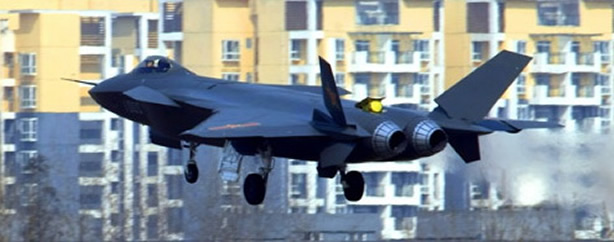 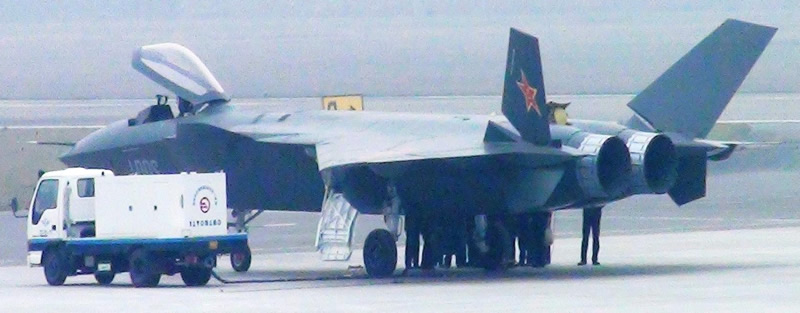 |
© AviationExplorer.com - The Website For Aviation Enthusiasts |


